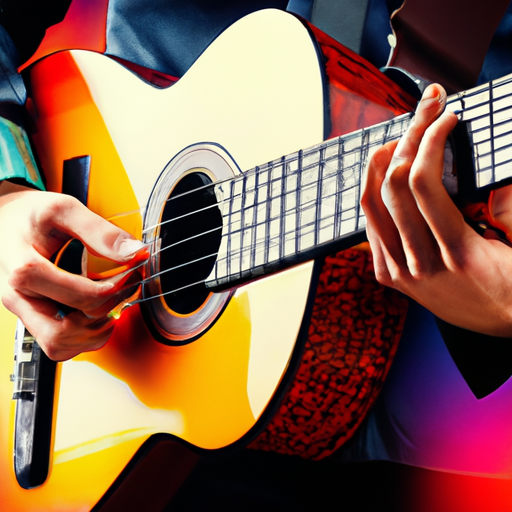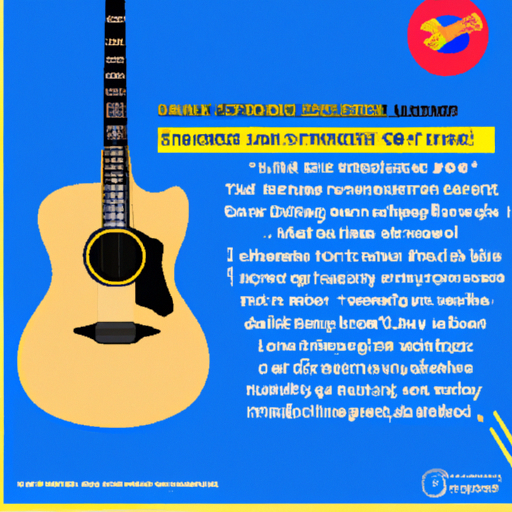
Choosing a guitar can be an exciting but daunting task. Whether you are a beginner or an experienced player, finding the right guitar that suits your needs and preferences is crucial. With so many options available in the market, it can be overwhelming to make a decision. In this article, we will guide you through the process of choosing the perfect guitar for your needs.

Before diving into the factors to consider when choosing a guitar, it is important to understand the process itself. Choosing a guitar is a personal decision and should be based on your individual preferences, playing style, and budget. It is essential to take your time, research, and try out different guitars before making a final decision.

There are several factors to consider when choosing a guitar:
First and foremost, determine your budget. Guitars come in a wide range of prices, and it is essential to set a budget that suits your financial capabilities. However, keep in mind that investing in a higher-quality guitar can significantly enhance your playing experience in the long run.
Your playing style and skill level should also influence your decision. Different guitars are suited for different genres and playing techniques. For example, if you prefer playing rock or blues, an electric guitar may be more suitable. If you are a beginner, an acoustic guitar is often recommended due to its simplicity and versatility.
The size and shape of the guitar should also be taken into consideration. A guitar should feel comfortable and be proportionate to your body type. There are different sizes available, such as full-size, 3/4 size, and 1/2 size, catering to players of various ages and physiques.
Every guitar produces a unique sound, and it is important to choose one that resonates with your preferences. Acoustic guitars offer a warm and natural sound, while electric guitars provide a more amplified and versatile sound. Classical guitars, on the other hand, are known for their mellow and soft tones.
There are various types of guitars available in the market, each with its own pros and cons:
Acoustic guitars are versatile instruments suitable for various genres and playing styles. They do not require an amplifier and are great for practicing and performing in small settings. Acoustic guitars produce a rich and warm sound and are often the preferred choice for singer-songwriters.
Electric guitars are popular in rock, blues, and jazz genres. They require an amplifier to produce sound and offer a wide range of tones and effects. Electric guitars are highly versatile and allow for experimentation with different sounds and playing techniques.
Classical guitars are known for their nylon strings and wide necks. They are mainly used for classical and flamenco music. Classical guitars produce a mellow and soft sound and are favored by fingerstyle players.
Trying out a guitar before purchasing is crucial to ensure it feels right and sounds good to you. Here are some tips for testing a guitar:
Check the playability of the guitar by playing different chords and scales. Ensure that the strings are comfortable to press down and the neck feels smooth and easy to navigate.
Listen to the sound quality of the guitar. Strum different chords and listen for clarity, resonance, and sustain. Pay attention to any buzzing or unwanted noise that may indicate poor craftsmanship.
Make sure the guitar feels comfortable in your hands and on your lap. Consider the weight, body shape, and size. A comfortable guitar will encourage longer practice sessions and reduce the risk of discomfort or strain.
Buying a used guitar can be a great way to save money while still getting a quality instrument. Here are some tips for buying a used guitar:
Thoroughly inspect the guitar for any signs of damage or wear. Check for cracks, warping, loose parts, or significant scratches. Test all the components, including the tuning pegs, bridge, and electronics (if applicable).
Test the playability and sound quality of the used guitar, just like you would with a new one. Ensure that it meets your standards and sounds good to your ears.
Research the specific model and its market value to ensure you are getting a fair deal. Verify the authenticity of the guitar, especially if it is a high-end or vintage instrument.
Choosing the right size and shape of the guitar is essential for comfort and ease of playing. Consider the following factors:
Guitar body shapes vary from dreadnought to concert, jumbo to parlor. Try out different shapes to find the one that feels the most comfortable and suits your playing style.
The neck width and profile can greatly affect how the guitar feels in your hands. Some prefer a wider neck for fingerstyle playing, while others prefer a slimmer neck for faster lead playing. Try different neck profiles to find your preference.
The scale length refers to the length of the strings from the nut to the bridge. Shorter scale lengths are generally more comfortable for players with smaller hands, while longer scale lengths offer greater string tension and resonance.
Choosing the right strings and accessories for your guitar is crucial for optimal playability and sound quality. Consider the following:
String gauge refers to the thickness of the strings. Lighter gauge strings are easier to play and bend, while heavier gauge strings offer more volume and sustain. Experiment with different gauges to find your preferred balance.
Try out different picks and straps to find the ones that feel comfortable and suit your playing style. Picks come in various thicknesses and materials, while straps vary in width and length.
Once you have chosen and purchased your guitar, proper maintenance and care are crucial to ensure its longevity and performance. Here are some tips:
Regularly clean the guitar with a soft cloth to remove dust and fingerprints. Use a guitar cleaner or polish to maintain the finish and keep it looking new.
Change the strings regularly to maintain optimal sound quality. Wipe down the strings after each use to remove sweat and oil, which can cause corrosion.
Store your guitar in a controlled environment with moderate humidity and temperature. Extreme conditions can cause damage to the wood and affect the playability and sound of the instrument.
There are various places to find and purchase guitars:
Visit local music stores to try out different guitars and seek expert advice from knowledgeable staff. Supporting local businesses also allows you to build relationships and receive ongoing support.
Online retailers offer a wide selection of guitars at competitive prices. Read reviews, compare prices, and ensure that the retailer has a reputable return policy before making a purchase.
Platforms such as classified ads, online marketplaces, and auction websites offer a range of used guitars. Exercise caution, research the seller, and thoroughly inspect the instrument before making a transaction.
Choosing the perfect guitar requires careful consideration of various factors, including budget, playing style, body type, and sound preference. It is essential to try out and test the guitar before making a purchase, whether it's new or used. Remember to choose the right size and shape, select appropriate strings and accessories, and maintain and care for your guitar after purchase. Explore local music stores, online retailers, and secondhand marketplaces to find the guitar that suits your needs. Happy playing!